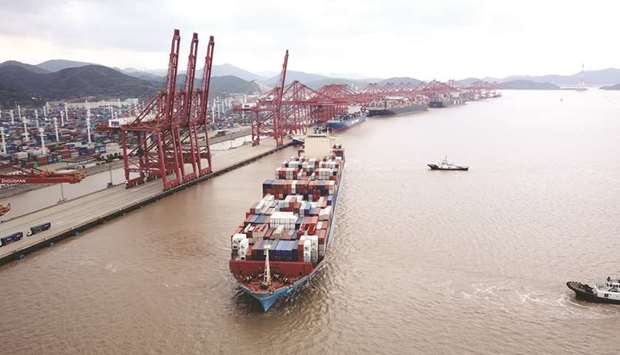China has offered to go on a six-year buying spree to ramp up imports from the US, in a move that would reconfigure the relationship between the world’s two largest economies, according to officials familiar with the negotiations.
By increasing goods imports from the US by a combined value of more than $1tn over that period, China would seek to reduce its trade surplus — which last year stood at $323bn — to zero by 2024, one of the people said. The officials asked not to be named as the discussions aren’t public.
The offer, made during talks in Beijing earlier this month, was met with scepticism by US negotiators who nonetheless asked the Chinese to do even better, demanding that the imbalance be cleared in the next two years, the people said. Economists who’ve studied the trade relationship argue it would be hard to eliminate the gap, which they say is sustained in large part by US demand for Chinese products.
US stocks extended gains and the dollar rose following the news. The S&P 500 Index rallied, climbing 1.2% by 11:31am and heading for its fourth weekly increase, while the dollar traded at session highs.
It’s not the first time China has made an offer to reduce the deficit as a way of trying to break the deadlock between the sides which has darkened the global economic outlook and roiled financial markets since last year. In May, Trump scrapped a framework for a deal negotiated by Treasury Secretary Steven Mnuchin that would have seen China “significantly” increase purchases of US goods.
By agreeing to buy more goods from the US, China may just shift its trade surplus toward other trading partners, said Tom Orlik, the chief economist for Bloomberg Economics.
“If China switches its imports from other countries to the US — less Brazilian soybeans, more US soybeans — that might help deal with their bilateral problem with the US, but at the expense of worsening imbalances with other countries,” he said.
Additionally, the types of products that China offers to buy more of could matter more than the overall target for a dollar amount, Orlik said. Airplanes, soybeans and automobiles were among China’s top US imports last year.
“Over the years, China has used the offer of purchasing more technologies with national security applications as a gambit in trade negotiations,” said Orlik. “That’s always been unacceptable to the US because of the strategic costs.”
No decisions were finalised in the latest Beijing talks and discussions are set to continue at the end of January, when Chinese Vice Premier Liu He is scheduled to travel to Washington.
The US will miss an opportunity for discussions with its trading partners after President Donald Trump cancelled his trip and the US delegation’s visit to the World Economic Forum in Davos next week amid the partial government shutdown. While no official plans were disclosed for US-China negotiations at Davos, Chinese Vice President Wang Qishan is due to attend the gathering.
There’s no clear sign that such an offer would now have a greater chance of success or even if it is practically feasible. US negotiators are also focused on matters including China’s alleged intellectual-property malpractices and state support of industry, disputes that are much harder to bridge. The Americans’ major sticking points were more prominent issues than China’s import plans during the latest round of talks in Beijing, one of the people said.
The offer implies raising the annual import total from $155bn to around $200bn in 2019 and in increasing steps thereafter, reaching an annual total of about $600bn by 2024, one of the people said.
The Commerce Ministry in Beijing didn’t immediately respond to request for comment on the negotiation details. The office of the US Trade Representative didn’t immediately respond to a request for comment.

A container ship is pulled by tug boats at the Port of Ningbo-Zhoushan in Ningbo, China. By agreeing to buy more goods from the US, China may just shift its trade surplus toward other trading partners, said Tom Orlik, the chief economist for Bloomberg Economics.


